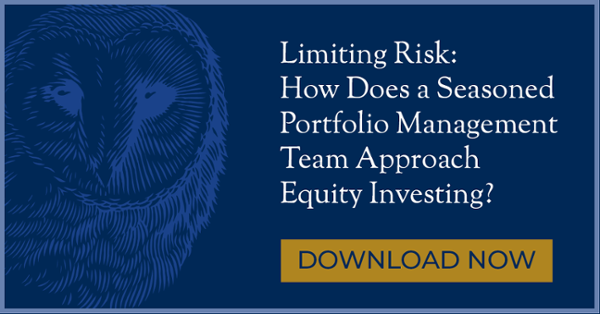A Couple Tailwinds We Believe Are Poised to Blow in Active Managers’ Favor
The arguments in favor and against active management are too long to tackle in a single blog post – and we won’t try to do so here. But as stocks find their footing after March’s downturn, we believe there are a couple important factors poised to work in active managers’ favor: size and quality. Both elements could be significant tailwinds for active managers in the months ahead, particularly when considering the composition and performance of indices heading into the slide.
In Current Environment, Quality Matters
Investment philosophies and styles vary, but many active managers – including Dana – emphasize “high quality” companies in the stock selection process. This means a preference for companies with stronger balance sheets, durable earnings streams and lower debt levels. Conversely, it means avoiding companies with high debt, and relatively low return on equity (ROE)* or return on assets (ROA)**.
When the economic outlook sours, the market starts to favor these higher quality companies, as the health and survival of companies with high debt levels or low profitability comes into question. We mentioned it in a previous blog post (Market Volatility Offers Investors a Reminder: Quality Counts) but even early in the downturn, higher quality companies were outperforming. We believe this trend should continue through the economic slump and in the early stages of the recovery.
If it does, the benefit for active managers could be significant, particularly for small cap managers. As of the end of February, the total percentage of unprofitable companies in the Russell 2000 Index stood at 29%, the highest level since November of 2009.¹ A market rotation out of all those stocks and into higher quality companies could be quite a boost for active managers relative to the index.
Going Forward, A Lower Market Cap Bias Could Also Help
Another shared feature of many active strategies is an inherent lower market cap bias, as portfolio managers go down in market cap to find investment ideas that may get less coverage. This too, could begin to work in active managers’ favor again. It's been a headwind in the early stages of the downturn and more recently with mega caps holding up very well. So far this year, larger stocks have outperformed by a significant margin, with the Russell 2000 Index down nearly twice as much as the Russell 1000 Index.²
But we believe smaller stocks are due for a rebound. As we pointed out in our last blog post, Are Small Caps Poised to Lead Again?, small caps tend to beat large caps after the market bottoms, outperforming larger stocks in the year following a recession nine out of the last 10 times. A rebound in these smaller names would be another tailwind to managers in the coming months or quarters.
As the market begins to stabilize and eventually recover from the initial sell off, we believe many active managers will be well positioned for what lies ahead. More specifically, we believe Dana’s investment process should serve investors well in this type of environment.
¹ https://www.wsj.com/articles/small-caps-eviscerated-in-stock-market-rout-11585134001?mod=searchresults&page=1&pos=12
²As of 4/15/2020.
* Return on Equity (ROE) is a measure of financial performance. It is calculated by dividing net income by shareholders' equity.
** Return on Assets (ROA) is a financial ratio showing the profit a company earns in relation to its resources. It is typically calculated by dividing net income by total assets.



